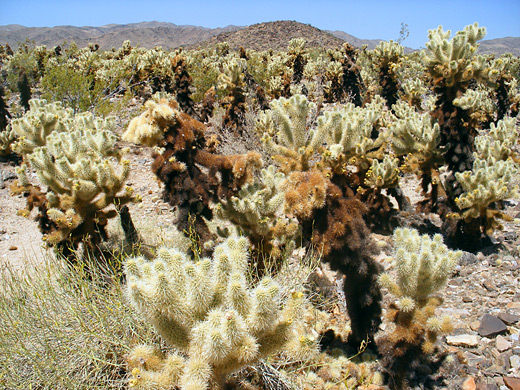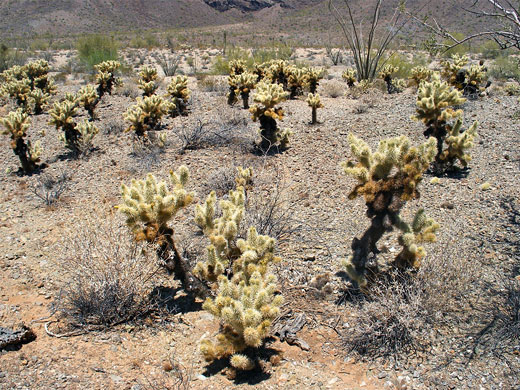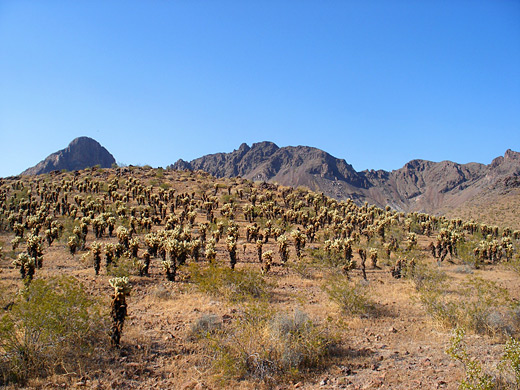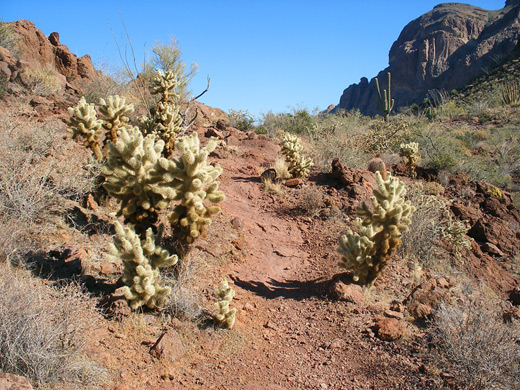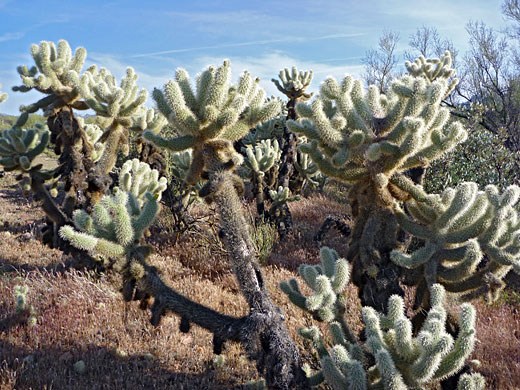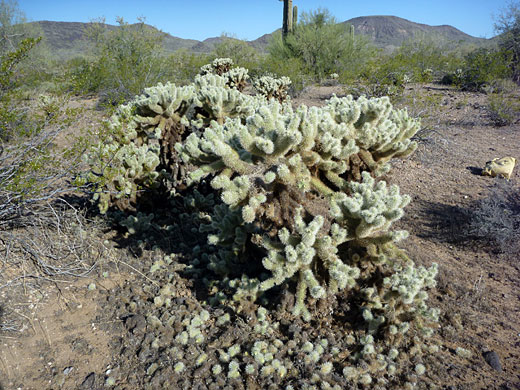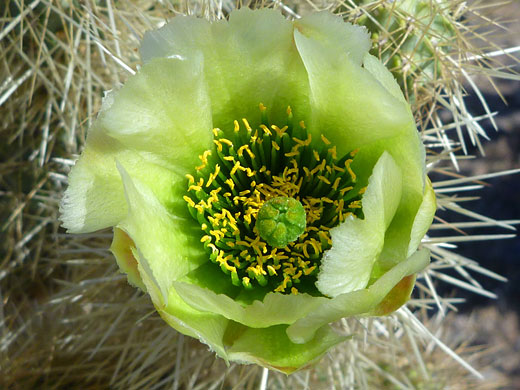Scientific name:
Cylindropuntia bigelovii
Common name:
Teddy bear cholla
Range:
Southeast California, far south Nevada, west and south central Arizona
Form:
Compact clusters, borne on a central stem some way off the ground
Habitat:
Exposed slopes and flats, in hot desert areas
Flowers:
Green-yellow, with small red patches at the tip

Distribution map for cylindropuntia bigelovii
The short (less than 5 inches), stout, cylindrical stems of teddy bear cholla are completely covered by thick, gold-colored spines that obscure the green skin and give a fuzzy appearance, becoming dark brown or even black with age. Both spines and stem segments are easily detached, adhering to anything that moves, and can be difficult to removing owing to tiny reverse barbs; this characteristic is the main method by which the plant is propagated, when fallen branches take root; some are carried long distances, after being stuck to passing animals. Mature cacti are around 5 feet tall, usually surrounded by a ring of discarded spines, pads and flowers. Mature plants develop a woody trunk at the base, several inches in diameter.
Cylindropuntia bigelovii is a plant of the Sonoran Desert, growing in exposed areas with full sun. It most resembles silver cholla (which has a similar range), the main difference being that the spines of the teddy bear cholla are of equal length (between 1 and 0.5 inches), whereas the other species has spines of varying lengths. There are four to 12 spines per areole.
Flowers, up to 1.5 inches across, are produced in May and June; they are yellow-green in color, the outer tepals streaked with red. Stamens have green filaments and yellow anthers. Stigma lobes are green. Fruits are similar in size or larger, covered with tubercles, and usually spiny; they contain few if any fertile seeds, however.
Cylindropuntia bigelovii is a plant of the Sonoran Desert, growing in exposed areas with full sun. It most resembles silver cholla (which has a similar range), the main difference being that the spines of the teddy bear cholla are of equal length (between 1 and 0.5 inches), whereas the other species has spines of varying lengths. There are four to 12 spines per areole.
Flowers, up to 1.5 inches across, are produced in May and June; they are yellow-green in color, the outer tepals streaked with red. Stamens have green filaments and yellow anthers. Stigma lobes are green. Fruits are similar in size or larger, covered with tubercles, and usually spiny; they contain few if any fertile seeds, however.
All Contents © Copyright The American Southwest | Comments and Questions | Contribute | Affiliate Marketing Disclosure | Site Map
